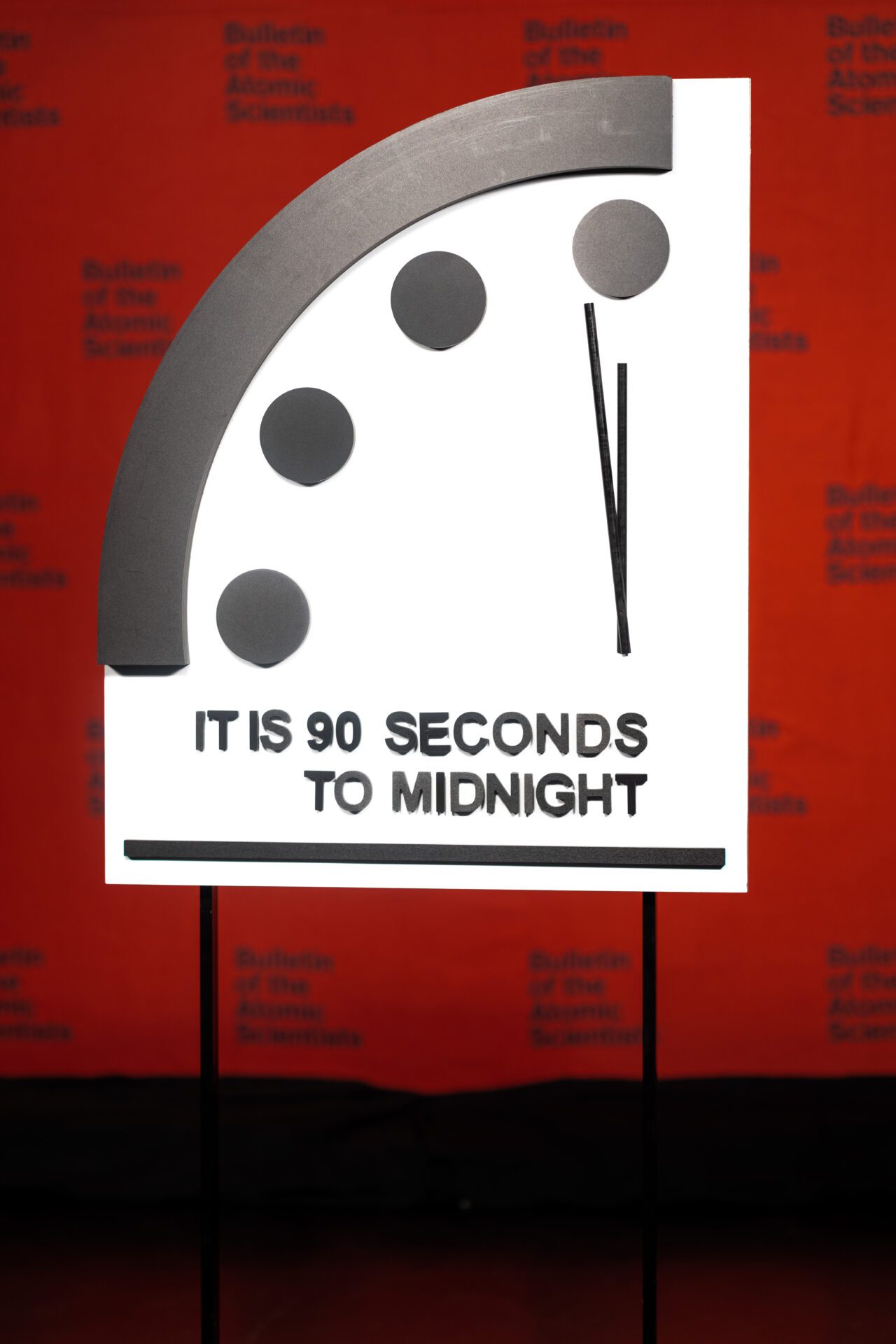Humanity is closer than ever before to self-destruction, the Bulletin of Atomic Scientists warned Jan. 24, citing continuing threats posed by the climate crisis, biological threats and the Russia-Ukraine war.
Since 1947, atomic scientists convene to reset the Doomsday Clock, a metaphorical clock created by scientists who helped develop the first atomic weapons to illustrate how close humanity has come to destroying itself. The scientists felt that they “could not remain aloof to the consequences of their work” and worked to inform the public and policy makers about man-made threats to human existence.
The Doomsday Clock has fluctuated in its distance from midnight since its induction, but has remained closer than ever for the last eight years. The clock had been set at 100 seconds to midnight since 2020. Now, it’s set at 90 seconds to midnight.
“We are living in a time of unprecedented danger, and the Doomsday Clock time reflects that reality. 90 seconds to midnight is the closest the Clock has ever been set to midnight, and it’s a decision our experts do not take lightly,” Rachel Bronson, president and CEO of the Bulletin of the Atomic, said in a press release. “The US government, its NATO allies and Ukraine have a multitude of channels for dialogue; we urge leaders to explore all of them to their fullest ability to turn back the Clock.”
The Doomsday Clock statement largely credits Russia’s thinly veiled threats to use nuclear weapons and the ongoing Russia-Ukraine war as a reason why the clock moved closer to midnight, but the climate crisis, bio-threats like COVID-19 and disinformation also contributed to the decision.
Russia’s threats negate decades of commitments, including the 1994 declaration when Russia joined the United States and the United Kingdom to promise that it would “respect the independence and sovereignty and the existing borders of Ukraine” and “refrain from the threat or use of force against the territorial integrity and independence of Ukraine.”
Those assurances played a key role in persuading the Ukrainian government to give up the world’s third-largest nuclear arsenal and sign an international treaty to prevent the spread of nuclear weapons.
Russia has broken nearly all of the commitments it undertook to relinquish Ukraine’s nuclear weapons and has brought the war to Cherbobly and other nuclear reactor sites in Ukraine, risking the release of radioactive materials.
The treaty is set to expire in February 2026 and the Department of State informed Congress that it can’t certify that Russia is in compliance with the agreement.
Other contributing factors
North Korea, Iran and China are expanding their nuclear capabilities. The U.S. Defense Department claims Beijing may increase its nuclear arsenal fivefold by 2035 and could “soon rival the nuclear capabilities of the United States and Russia, with unpredictable consequences for stability,” according to the Bulletin of Atomic Scientists.
Global carbon dioxide emissions from burning fossil fuels hit a new record high in 2022.
Weather extremes were more evidently attributed to climate change. West Africa experienced above-average rainfall and saw more devastating floods in 2022 than it has seen in years. Pakistan faced a monsoon season “on steroids” that unleashed major crop failure, an epidemic of water-borne diseases and the destruction of infrastructure and homes affecting more than 33 million people, due to heavier than usual monsoon rains and melting glaciers linked to climate change.
The increase of zoonotic diseases, which originate in animals and are transmitted to humans, puts the population at significant risks for pandemics.
Contact staff writer Jayden Kennett at 317-762-7847. Follow her on Twitter @JournoJay.







